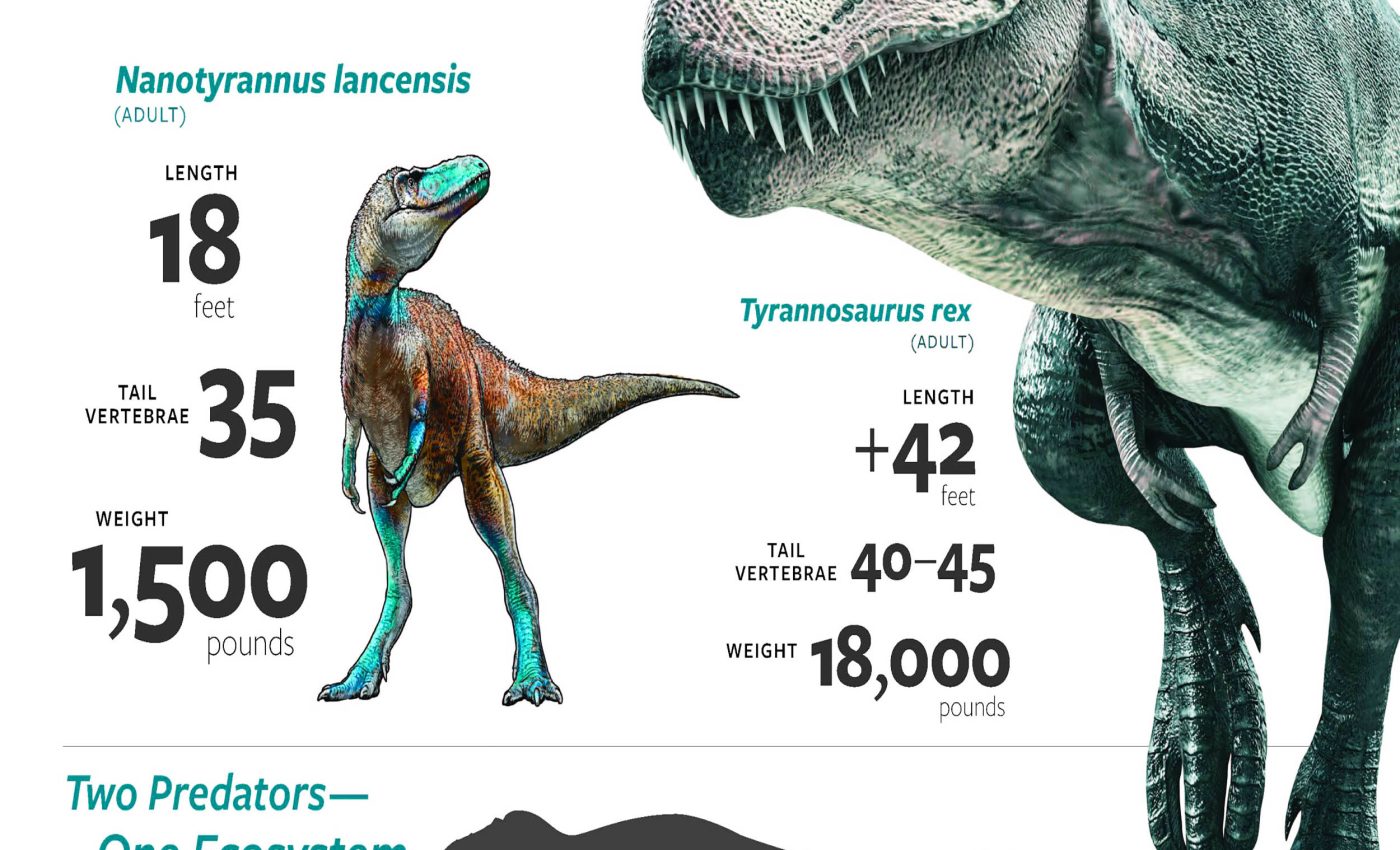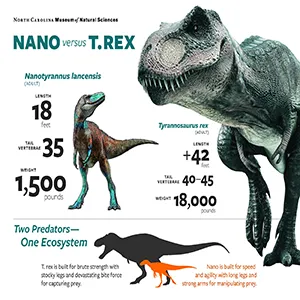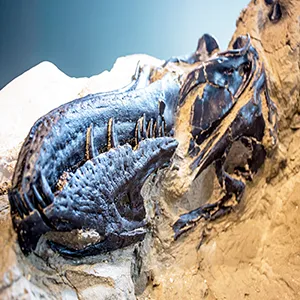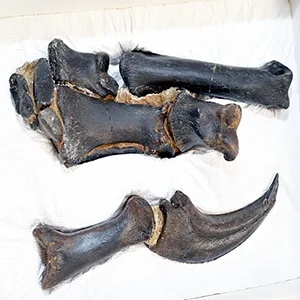
T. rex history is completely rewritten by the discovery of dinosaur named 'Nanotyrannus'
In Montana, two dinosaurs died mid-battle. One was a Triceratops. The other, a smaller predator, was long believed to be a teenage Tyrannosaurus rex.
For years, that assumption shaped textbooks, documentaries, and museum displays. Now, that long-held belief has crumbled.
Recent research confirms that the smaller dinosaur wasn’t a young T. rex at all. It was a fully grown Nanotyrannus lancensis.
That single revelation has rewritten a major chapter of dinosaur evolution and forced scientists to question what they thought they knew about the most iconic predator of all time.
“This fossil doesn’t just settle the debate. It flips decades of T. rex research on its head,” said Professor Lindsay Zanno of North Carolina State University and head of paleontology at the North Carolina Museum of Natural Sciences.

Nanotyrannus redefines growth
Using growth rings, spinal fusion, and bone microstructure, the researchers pieced together a biological timeline.
Each test pointed to one conclusion: the animal was not growing. It was mature, about 20 years old when it died.
Its body structure told a consistent story. The arms were longer. The skull held nerve channels shaped differently from T. rex.
The tail contained fewer vertebrae. These features form early in life and remain fixed, meaning the specimen had already reached adulthood.
“For Nanotyrannus to be a juvenile T. rex, it would need to defy everything we know about vertebrate growth,” said James Napoli, an anatomist at Stony Brook University. “It’s not just unlikely – it’s impossible.”
The realization hit hard. For decades, paleontologists had used Nanotyrannus bones to estimate how T. rex developed and hunted. Those models, it turns out, were built on the wrong species entirely.

Two predators, one world
The “Dueling Dinosaurs” fossil doesn’t just preserve bones. It freezes a moment of raw prehistoric violence. The Triceratops and Nanotyrannus died locked together, one stabbing, the other biting.
For scientists, that scene is priceless. It shows predator and prey at the exact moment of struggle – a story rarely captured in stone.
The find also changes how scientists imagine the Late Cretaceous landscape. T. rex was no longer the only large predator dominating North America.
A smaller, swifter hunter shared the stage. Nanotyrannus might have targeted different prey, moving quickly where T. rex relied on power.
The two predators likely competed at the top of the food chain, each adapting to survive. Their coexistence suggests a richer, more dynamic ecosystem than anyone expected. The age-old image of a lone king ruling the plains now looks incomplete.

Forgotten hunter returns
While studying more than 200 tyrannosaur fossils, Zanno and Napoli noticed another anomaly.
One skeleton, slightly different from the known Nanotyrannus lancensis, carried features never seen before. It wasn’t a misfit T. rex. It was another species altogether.
They named it Nanotyrannus lethaeus, inspired by the River Lethe from Greek mythology – the river of forgetfulness. The name feels symbolic.
The species had been sitting in plain sight, mislabeled and overlooked for decades. Now, it has finally emerged from scientific obscurity.
This new identification adds another twist to the story. It confirms that tyrannosaur evolution was more complex than anyone realized.
Instead of one lineage leading neatly to T. rex, there was a branching network of predators, each with distinct traits and behaviors.
That insight suggests that other fossils might also belong to misclassified species. The Late Cretaceous could have hosted more diversity than the fossil record currently reflects, hinting at a crowded stage before the final act of extinction.

Nanotyrannus rivals T. rex
“This discovery paints a richer, more competitive picture of the last days of the dinosaurs,” said Zanno.
“With enormous size, a powerful bite force and stereoscopic vision, T. rex was a formidable predator, but it did not reign uncontested. Darting alongside was Nanotyrannus – a leaner, swifter, and more agile hunter.”
This idea reframes the world just before the asteroid struck. The Cretaceous wasn’t ruled by one tyrant but shared by multiple hunters with competing strengths. The balance of power was more delicate than anyone knew.
The study, published in Nature, was supported by the State of North Carolina, NC State University, the Friends of the North Carolina Museum of Natural Sciences, and the Dueling Dinosaurs Capital Campaign.
The fossil from Montana doesn’t just show a fight frozen in time. It exposes a misunderstanding buried in decades of research and brings a long-forgotten predator back into the spotlight.
The supposed teenage T. rex never existed. The truth is better – it was a rival king that had been hiding in plain sight all along.
The full study was published in the journal Nature.
—–
Like what you read? Subscribe to our newsletter for engaging articles, exclusive content, and the latest updates.
Check us out on EarthSnap, a free app brought to you by Eric Ralls and Earth.com.
—–













